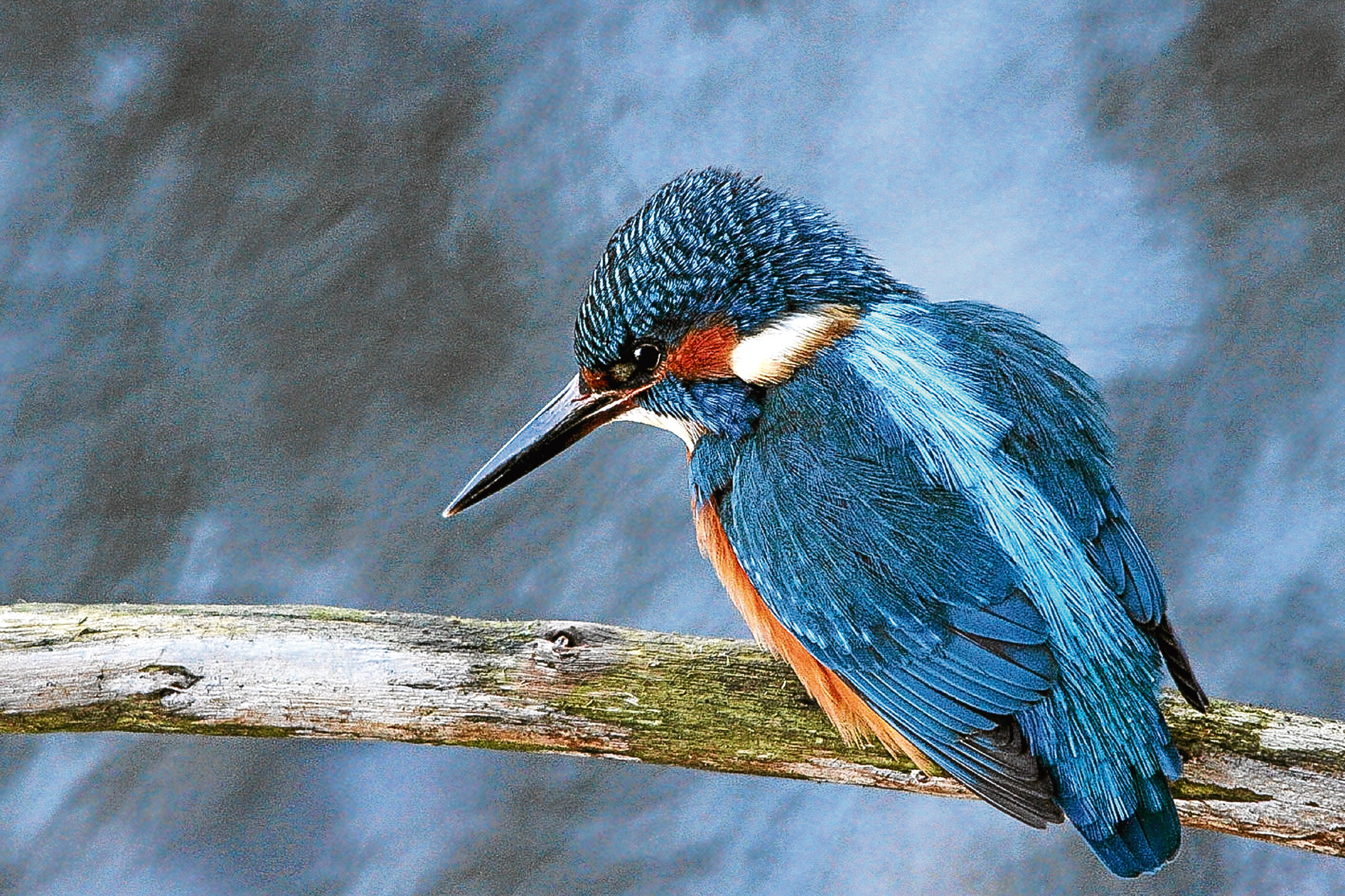I have been watching a lot of kingfishers. No, that’s wrong. I have been watching kingfishers a lot, usually the same ones.
I am deep into a long-term book project, an open-ended series of short nature monographs called Encounters in the Wild. I’ve written six – barn owl, fox, hare, swan, badger, skylark.
They’ve all been wonderfully eye-opening experiences. And right now I am having my eyes opened by kingfishers. What I’ve learned is this: colour is to kingfishers what slipperiness is to eels.
The particular quality of their plumage that startles, that makes gibberish-peddlers out of field guide compilers and induces frustrated poets to throw themselves from tall cliffs, is nothing more than an ingenious arrangement of shades of blue, all of which are unexceptional in their own right, but which are downright sensational when they are so intricately and inspirationally juxtaposed with each other and with solid patches of smoky orange.
Beautiful blues
The one rare shade of blue is an irregular streak of pale, sunlight-on-summer-sea kind of blue that extends the length of its neck, back and tail.
But it also recurs sporadically like exotic freckles on the top of the bird’s head and on its eyebrows, in narrow stripes along the cheeks, and as spots, stripes and tapering patches on the top of its wide-open wings.
But there’s more: in the right kind of light (and these early September afternoons have been awash with it), the primary wing weathers alternate a muted shade of that pale blue with deeply-toned lilac.
Then there is the orange: a cheek triangle that gives way to a backwards dog collar of bright white extending round the back of the neck, and deeper and darker orange coats the flanks and belly and part of the underwings.
The final embellishments are scarlet legs and feet, and (tucked away with what little discretion a kingfisher can muster), that little glimpse of white cravat.
Oh, and the whole thing is set off with a black and red dagger of a bill as long as its head.
Standing out
I cannot help wondering what evolution was up to when it went to such trouble to make kingfishers stand out from the crowd, and all this for a bird that would be the same size as a sparrow were it not for the embellishment of that fish-slaying bill.
There is a widespread belief that the effect is designed to warn would-be predators that kingfisher flesh tastes disgusting, but I detect a hint of the medieval at work in that particular theory, which in turn makes me wonder if Shakespeare wrote it somewhere, just as he invented and gave universal credibility to the idea that swans sing as they die (the don’t!).
It is still regurgitated endlessly as a kind of ornithological mantra, although I have yet to meet anyone who can identify the source, or who is prepared to admit that they have first hand experience of what a kingfisher tastes like.
There are other wild birds out there that cut a dash but don’t come with a health warning – green woodpeckers, yellowhammers, black grouse, redstarts, yellow wagtails and bullfinches, for example. So why would the idea adhere only to kingfishers?
I remember a little TV film about a river, made memorable by a sequence in which two female kingfishers were knocking lumps out of each other.
The fight eventually collapsed on to the water, at which point the birds hurtled downstream at the speed of the current.
Neither would loosen its grip on the other and it looked as if the only outcome would be that one of the birds – or both – would drown.
The decisive intervention came from a mink which had laid an ambush, timed its attack perfectly, and disappeared into the undergrowth of the bank with one of the kingfishers in its mouth.
Bedraggled
Almost at once it returned for the second kingfisher, but the bird had recovered sufficiently to fly up to an overhanging branch where it perched, looking as drab and bedraggled as a Victorian kingfisher that had been stuffed and mounted in a glass case for 150 years.
Adding insult to its considerable injury, her mate suddenly appeared, as gleaming as a kingfisher by Faberge, mated with her where she stood, then vanished, leaving her alone again to ponder the sequence of events that had just befallen her.
All of which suggests that (a) the mink hasn’t read the health warnings about kingfisher flesh, (b) it has but doesn’t care what the flesh tastes like as long as it’s flesh, or (c) it’s colour-blind, in which case the kingfisher’s flashy plumage is completely useless, and it may as well have been just another little brown bird.
So, it’s been an eye-opener.
It just hasn’t provided all the answers. But I’m not done yet.










